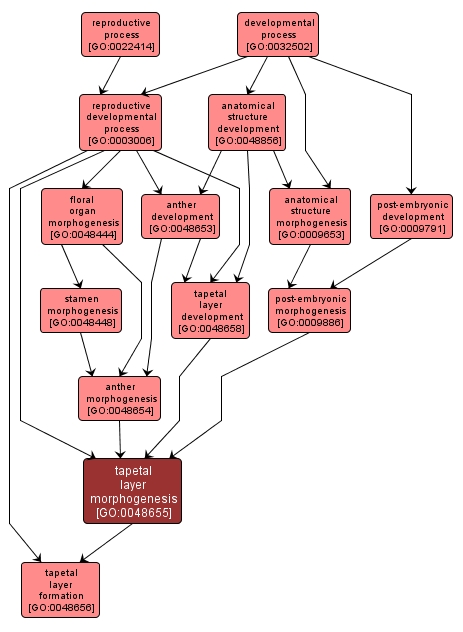GO TERM SUMMARY
|
| Name: |
tapetal layer morphogenesis |
| Acc: |
GO:0048655 |
| Aspect: |
Biological Process |
| Desc: |
The process by which the anatomical structures of the tapetal layer are generated and organized. Morphogenesis pertains to the creation of form. The tapetum is a layer of cells that provides a source of nutrition for the pollen grains as they mature. |
Synonyms:
- differentiation of tapetal layer
- tapetum morphogenesis
|
|

|
INTERACTIVE GO GRAPH
|














